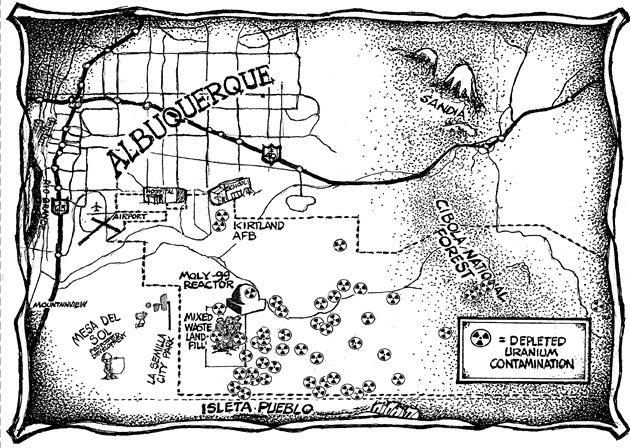
Blue Ridge Environmental Defense League, Inc.
Files
Download Full Text (946 KB)
Document Type
Report
Date
3-2007
Description
In the early 1950’s, the United States constructed a vast new atomic weapons center in the rolling countryside between Aiken, South Carolina and Augusta, Georgia. Factories replaced farmland and whole towns were relocated to make way for a huge federal facility.
Today, nuclear weapons production has taken a back seat to environmental clean up at the Savannah River Site, SRS. The 310 square mile SRS encompasses scores of underground tanks with millions of gallons of radioactive sludge, waste dumps with thousands of tons of contaminated soil and huge amounts of polluted groundwater. Radioactive gas is being dispersed into the air. Facilities for high-level and low-level waste continue to process and store radioactive substances.
In 2001 the Blue Ridge Environmental Defense League launched an extensive investigation into the operations at the Savannah River Site. We gathered reports prepared by government contractors. We studied the surrounding communities. Using computer modeling, we calculated the impact of air pollution from SRS in nearby towns. In addition to air modeling, we collected air samples at various points around the perimeter of the site. We detected a variety of toxic air pollutants outside the boundaries. The atmospheric emissions from SRS include tritium, nitric acid, volatile organic compounds, mercury, hydrogen fluoride, styrene and many other pollutants.
Our principal conclusion based on the findings of this report is that recent and ongoing operations at SRS are having and may continue to have negative impacts on the health of residents in the central Savannah River area unless sweeping changes are made. Our investigation centered on the atmospheric emissions from smokestacks at SRS and how they affect nearby towns and rural communities. We know that the consequences of contamination have had an impact on people in all directions for hundreds of square miles around SRS. Additional exposure must be reduced and eliminated. Finally, we hold that the additional burdens which would be created by new military production facilities at SRS would be an injustice to the people in this area.
This research was completed money allocated during Round 2 of the Citizens’ Monitoring and Technical Assessment Fund (MTA Fund). Clark University was named conservator of these works.
If you have any questions or concerns please contact us at digitalrepository@clarku.edu
Publisher
Blue Ridge Enviornmental Defense League, Inc.
Format
Keywords
nuclear weapons, nuclear weapons testing, environment, non-governmental organizations, United States Department of Energy, tribal governments, environmental cleanup, radioactive fallout, radioactive waste
Rights
Copyright belongs to the authors. Clark University was chosen by the non-profit peace and environmental groups as the conservator of these reports; our right to distribute these works ensures they remain available to the public in perpetuity as intended. Reuse at your own discretion with with due deference to copyright holders.
Location
Aiken, SC
Recommended Citation
Blue Ridge Enviornmental Defense League, Inc. and Zelller, Louise A., "Sow the Wind: Toxic Air Pollution from the Savannah River Site" (2007). Blue Ridge Environmental Defense League, Inc.. 1.
https://commons.clarku.edu/blueridge/1



